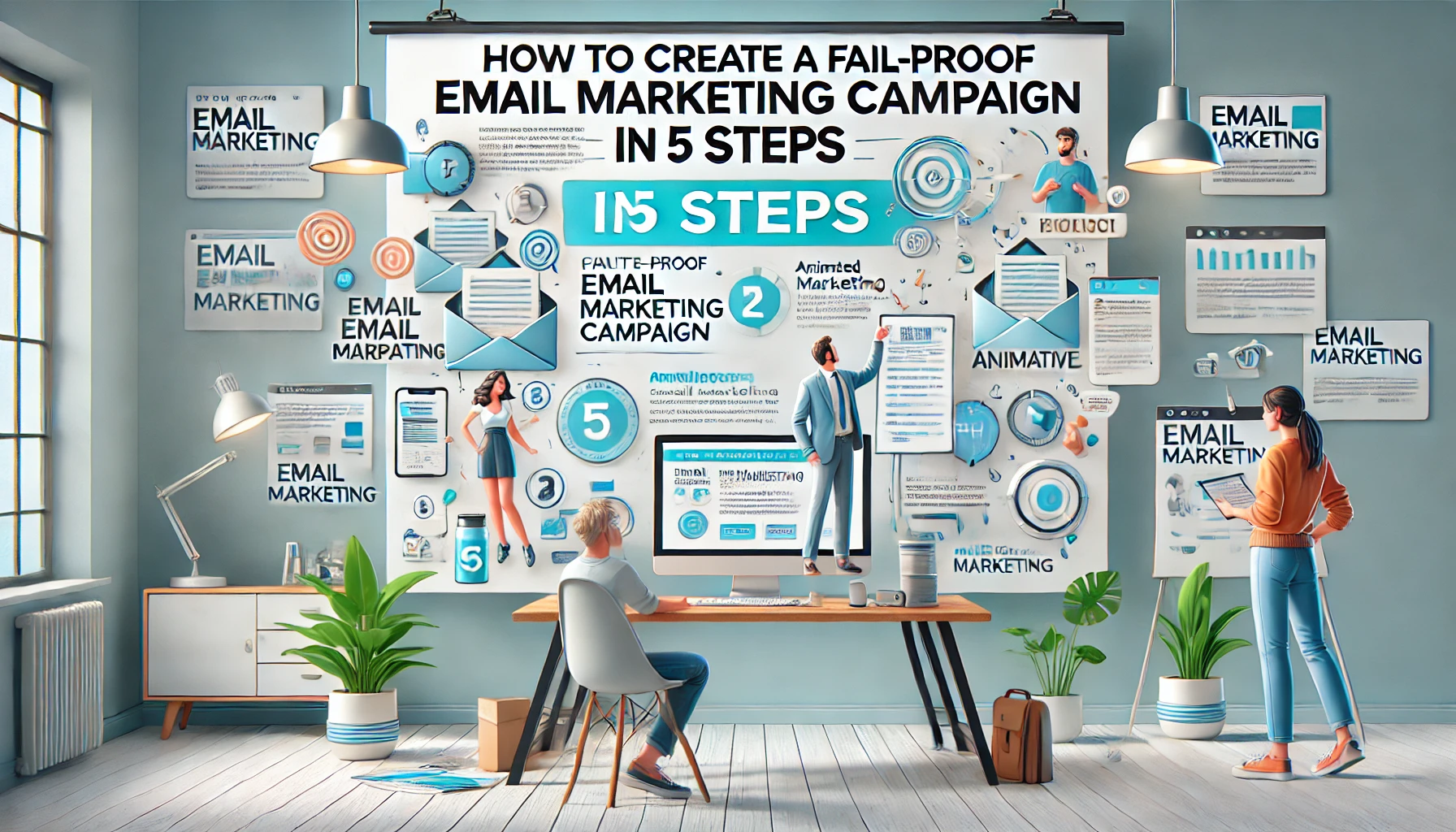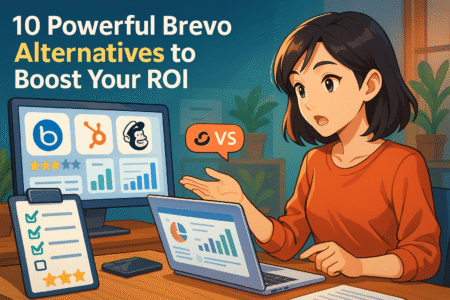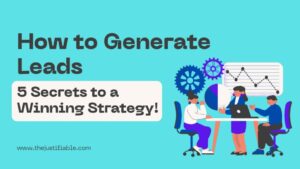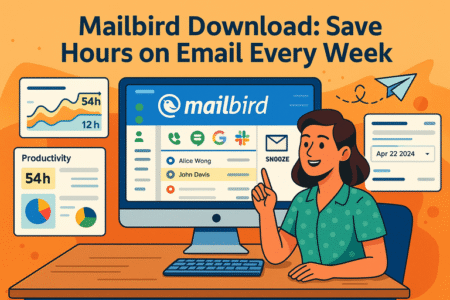Table of Contents
Are you struggling to build a successful email marketing campaign that drives results? Wondering how to create a strategy that won’t fail, even in a crowded digital space?
In this guide, you’ll discover the 5 essential steps to designing a fail-proof email marketing campaign, ensuring engagement, conversions, and growth for your business. Let’s dive in!
1. Understanding the Fundamentals of Email Marketing Campaigns
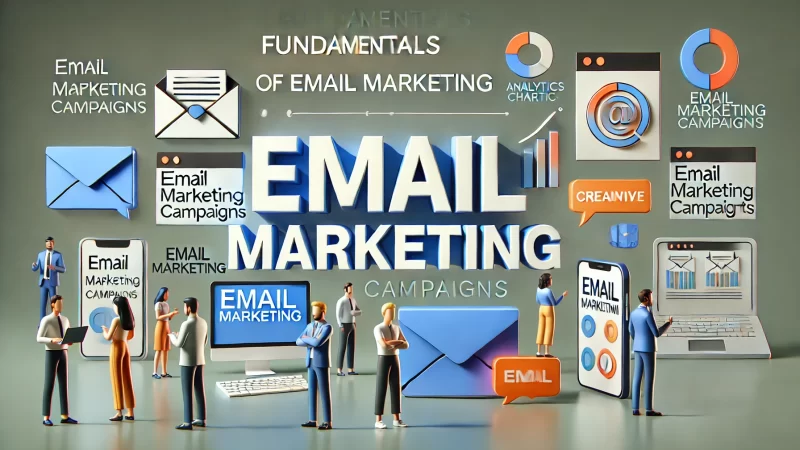
Email marketing campaigns are essential for engaging your audience, driving sales, and building lasting relationships with customers. A solid understanding of its core elements is the foundation of a successful strategy. Let’s explore the key factors that define a fail-proof email marketing campaign.
What Defines a Successful Email Marketing Campaign
A successful email marketing campaign resonates with your audience and compels them to take action. Whether you’re aiming for click-throughs, purchases, or sign-ups, a clear objective must guide your efforts. I believe your campaign’s success hinges on aligning this goal with your audience’s needs.
Each email you send should have a specific purpose. Crafting concise and engaging content ensures your recipients know exactly what action to take. I suggest keeping emails focused to avoid overwhelming your audience. Make every email worth their time.
Consistency is another key element. If you promise a weekly newsletter or promotional email, ensure it arrives as expected. Your audience will trust you more when you deliver on your promises. In my experience, consistency helps to keep your brand top of mind.
Incorporating personalization into your emails can also significantly enhance engagement. People appreciate feeling seen and understood. Using your recipient’s name or personalizing content based on their past interactions shows you care about their preferences.
Core Elements to Ensure Your Email Campaign Delivers Results
I believe that the core elements of a successful email marketing campaign include engaging content, targeted messaging, and visually appealing design. These components work together to create an email that recipients will want to open, read, and act on.
First, I suggest focusing on creating compelling email copy that speaks directly to the reader. Short, clear sentences that address pain points or offer solutions can grab attention. Make sure your email’s tone is conversational but still professional to maintain a connection.
Visual design matters too. A well-designed email that is easy to read on mobile devices can boost engagement. I recommend using images, bullet points, and bold text sparingly to enhance readability without overloading your recipients.
Testing is another vital component. Running A/B tests allows you to experiment with subject lines, content, and visuals to see what resonates most. Based on what I’ve observed, even small changes can make a big difference in performance.
Finally, always include a strong call to action (CTA). It should stand out and clearly guide the reader to the next step, whether that’s making a purchase or signing up for more content. A well-placed CTA can significantly boost conversion rates.
Why Audience Segmentation Matters in Email Campaign Success
Segmenting your email list means dividing your subscribers into specific groups based on their behaviors, preferences, or demographics. I recommend using segmentation to send more personalized and relevant content to each group, increasing the chances of engagement.
For example, segmenting based on purchase history allows you to tailor offers to specific groups. Someone who has bought from you before may appreciate loyalty discounts, while new subscribers may respond better to introductory offers. I find this method enhances customer satisfaction and retention.
You can also segment your audience by their engagement levels. Some subscribers may open every email, while others engage sporadically. In my experience, targeting highly engaged users with exclusive content keeps them engaged, while re-engagement campaigns can bring back less active subscribers.
Sending the same content to your entire list risks alienating readers who find it irrelevant. I suggest refining your segments regularly to ensure your email campaigns stay relevant to each subscriber group. A well-segmented list is key to driving higher open rates and conversions.
Behavioral segmentation is another powerful strategy. Based on their past actions—such as clicking on specific products—send tailored emails that nurture their interests. I’ve seen this strategy significantly boost engagement and encourage quicker decision-making.
2. Building an Irresistible Offer for Your Email Marketing Campaign
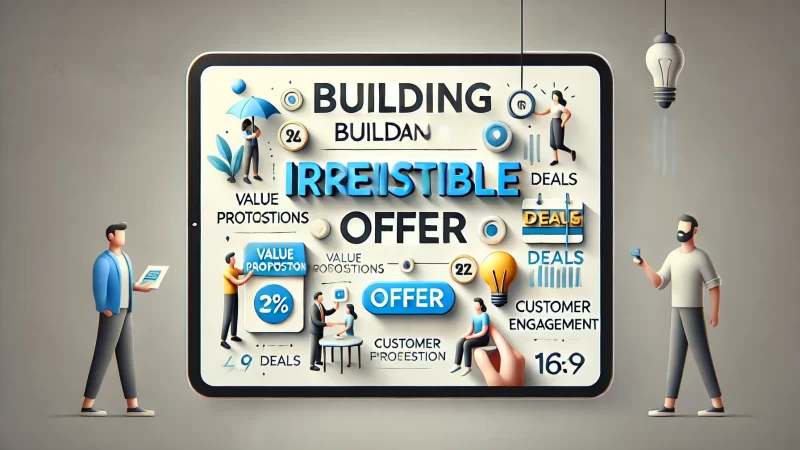
Creating an irresistible offer is the cornerstone of a successful email marketing campaign. An offer that speaks directly to your audience’s needs and desires is more likely to drive conversions. The more relevant and attractive your offer, the better your results will be.
How to Craft an Enticing Email Offer That Drives Conversions
An enticing email offer is clear, valuable, and tailored to the recipient. To start, I recommend focusing on what your audience finds valuable—whether that’s discounts, exclusive content, or early access to products. The key is knowing what motivates your subscribers to act.
Using urgency and scarcity in your offer can also encourage quicker action. Adding phrases like “limited-time offer” or “only a few spots left” can create a sense of urgency. I’ve seen this strategy work particularly well in time-sensitive campaigns where quick responses are needed.
I advise being clear and upfront about the benefits your audience will receive. Avoid overcomplicating the message; simplicity sells. For example, “Get 25% off your first purchase” is straightforward and tells recipients exactly what they’ll gain by acting now.
Finally, I suggest reinforcing your offer with social proof or testimonials. Highlighting customer experiences adds credibility and encourages trust. In my experience, seeing others benefit from your offer can push more subscribers to convert.
Ways to Personalize Offers to Match Subscriber Needs
Personalizing offers based on customer data can drastically improve engagement and conversions. I recommend leveraging subscriber data—like past purchase behavior or location—to send offers that are uniquely relevant to them. For example, if someone frequently buys fitness gear, sending them discounts on related items would likely yield better results.
Using a subscriber’s name in your emails can also help build a personal connection. I’ve found that even small touches like this can increase engagement, as recipients feel the email was written specifically for them. Personalized offers feel more exclusive and valuable.
You could also offer loyalty rewards to long-term subscribers. I advise using these offers as a way to thank your loyal customers for their continued support. Exclusive perks for repeat buyers can strengthen the relationship and foster long-term loyalty.
Automated email flows are another effective way to personalize offers. For example, sending a discount code on a subscriber’s birthday shows you’re paying attention to their individual milestones. In my experience, these small gestures can make a big difference in how your brand is perceived.
Mistakes to Avoid When Creating Email Offers for Campaigns
While crafting an offer, certain missteps can limit your campaign’s success. One common mistake I’ve noticed is being too vague about what the offer entails. If recipients have to work to understand what you’re offering, they may lose interest. I suggest keeping it clear and direct.
Overloading your emails with too many offers at once can also be counterproductive. When faced with multiple options, subscribers might feel overwhelmed and take no action at all. I advise focusing on one key offer to avoid confusion and enhance conversions.
Another pitfall is ignoring the importance of timing. Sending an email offer at the wrong time—like during holidays when inboxes are flooded—can reduce your visibility. Based on my experience, strategic timing plays a huge role in your email’s success.
Lastly, avoid sending generic, impersonal offers. If the offer feels like it was sent to the masses without thought, it’s less likely to resonate. I recommend taking the time to segment your list and personalize each offer as much as possible for higher engagement.
3. Designing Engaging and Professional-Looking Emails
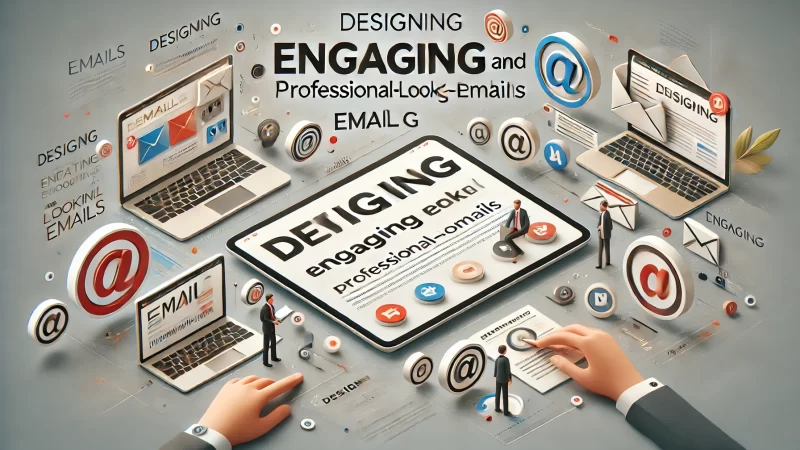
Creating visually appealing and engaging emails is essential to ensuring your email marketing campaign resonates with recipients. Well-designed emails not only capture attention but also enhance readability, making it easier for readers to interact with your message and take action.
The Importance of Visual Design in Your Email Marketing Campaign
Visual design plays a huge role in whether your emails get noticed. I recommend using a clean, visually balanced layout that guides the reader’s eye naturally from the header down to the call-to-action. It should feel effortless for subscribers to engage with.
Using high-quality images or branded graphics can elevate the professional look of your emails. From what I’ve seen, well-chosen visuals help convey your message faster and more memorably. However, it’s important to ensure that your images are optimized for email delivery.
I also believe using white space effectively is crucial. It creates breathing room for your content, making it more digestible. Without clutter, your readers will find it easier to focus on your message, reducing the risk of them clicking away.
Another key to visual success is consistency. Sticking to a uniform color palette, fonts, and overall style strengthens your brand recognition. Recipients should immediately recognize your emails as coming from you, which fosters a stronger connection and trust.
How to Write Compelling Copy that Boosts Email Engagement
Your email copy should be clear, concise, and engaging. I suggest writing in a conversational tone, as if you’re speaking directly to the reader. This personal touch can make your message more relatable and encourage recipients to take action.
Each email should open with an attention-grabbing headline. I’ve found that the best subject lines pique curiosity or highlight a direct benefit to the reader. Keep it short and to the point, as long-winded subjects tend to be ignored in crowded inboxes.
I believe breaking up your content with subheadings, bullet points, and short paragraphs helps maintain interest. No one wants to wade through blocks of text. Make your points quickly, and give readers an easy path to navigate through your email.
Calls to action (CTAs) are key. Make your CTA crystal clear, using actionable language that tells the reader exactly what to do next. Phrases like “Get your free guide now” or “Shop the sale today” can guide them toward making a decision without hesitation.
Leveraging Mobile-Optimized Email Designs for Higher Conversion
With so many people checking emails on their phones, mobile optimization is no longer optional. I recommend using responsive design templates that automatically adjust based on screen size, ensuring your email looks great whether viewed on desktop or mobile.
One thing I suggest is making sure your email font size is legible on smaller screens. Tiny text leads to frustration and potential disengagement. A minimum font size of 14-16px is ideal for readability on mobile devices.
Avoid cramming too much content into your email. Based on what I’ve seen, concise, scannable content performs better on mobile. Using short paragraphs, bold text for emphasis, and easy-to-click buttons ensures your subscribers can engage with your message on the go.
Buttons and links should be touch-friendly. I’ve noticed that small links can be difficult to click on mobile. By using large, clear buttons and ensuring adequate spacing between clickable elements, you’ll make it easier for users to complete the desired action.
4. Crafting a Strong and Timely Email Marketing Schedule
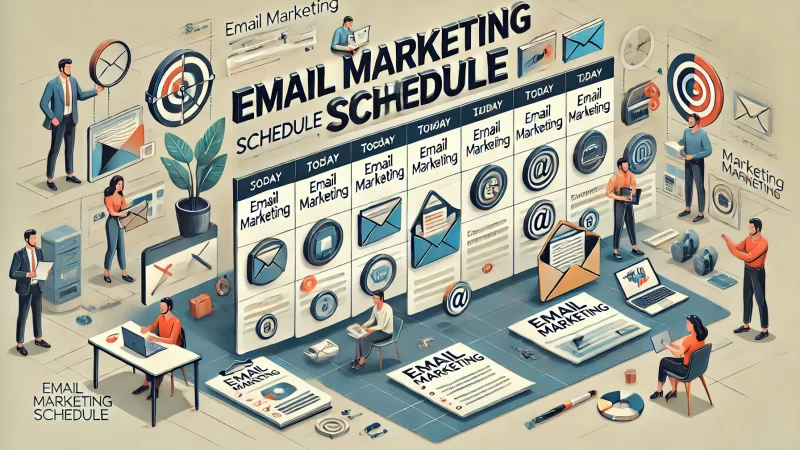
Timing can make or break the success of your email marketing campaign. A well-crafted schedule ensures that your emails reach your audience at the right moment, increasing the likelihood of opens, engagement, and conversions. Let’s explore how to perfect your email timing.
Why Email Timing Can Make or Break Your Campaign Success
Sending an email at the right time dramatically increases your open rates. I suggest considering when your target audience is most likely to check their inboxes. For example, early mornings or lunch breaks often yield better engagement than late evenings.
Your audience’s behavior can provide clues about ideal sending times. If your subscribers are professionals, I’ve noticed that emails sent during business hours work best. On the other hand, for a consumer audience, weekends or evenings might be more effective.
I recommend experimenting with different times based on your specific audience. While general best practices suggest certain optimal times, no two subscriber lists are identical. Finding what works best for your list can lead to better results and higher ROI.
Email frequency is another aspect to consider. Bombarding your audience with emails can lead to unsubscribes. I believe sending emails consistently but not excessively helps build trust. People appreciate regular updates without feeling overwhelmed.
Best Practices for Scheduling and Automating Your Campaign
Automation can be a game-changer for your email marketing strategy. I recommend setting up automated email sequences for actions like welcome emails, abandoned cart reminders, or re-engagement campaigns. Automation saves time while keeping your subscribers engaged.
One practice I’ve found useful is sending out drip campaigns, where you send a series of emails over a period of time. These can nurture leads, onboard new subscribers, or guide customers through a purchase funnel without requiring constant manual input.
Email marketing platforms often offer scheduling features that help you pick optimal times. I suggest using these tools to automate your emails so that they go out at the best possible moment, even if you’re not actively pressing “send.”
You should also consider the length of your email sequences. I advise mapping out your campaign’s lifecycle—whether it’s over a week or a month—and ensuring that each email adds value. A well-timed sequence can build trust and encourage consistent engagement.
How to A/B Test Email Sending Times for Maximum Impact
A/B testing is crucial for understanding what works best for your audience. I recommend testing different sending times to see which yields higher open and click-through rates. Split your audience into two groups and compare results to find the optimal time.
It’s important to isolate one variable at a time. For example, when testing email timing, keep the content the same across both groups. This way, you know that any difference in performance is due to the time of day the email was sent.
I’ve found that testing different days of the week can also reveal valuable insights. Some audiences engage more on weekdays, while others may prefer weekends. Experimenting with both can provide a clearer picture of when your emails perform best.
Don’t forget to analyze the results. Once you’ve run your A/B test, review which time produced better engagement. I suggest making adjustments to your future email schedule based on these insights for continued optimization and better campaign performance.
5. Analyzing and Optimizing Your Email Marketing Campaign Results
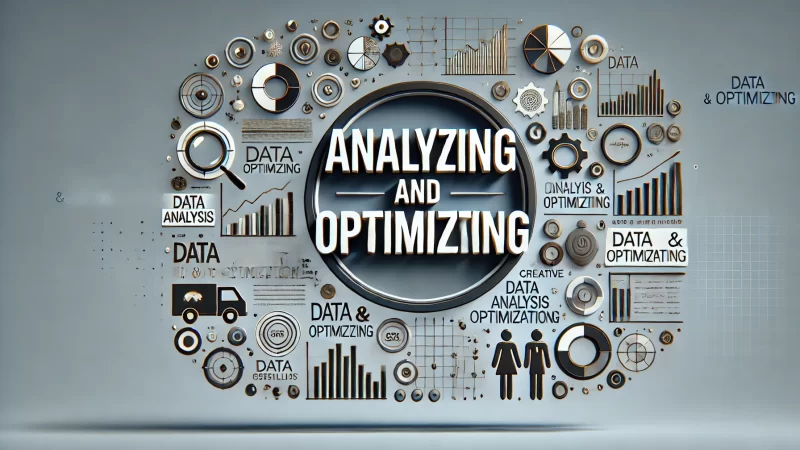
Analyzing your email marketing campaign results is crucial for improving future performance. By monitoring key metrics, you can identify what’s working and what needs adjustment, ensuring that your future campaigns continue to drive engagement and conversions.
How to Use Data Insights to Improve Campaign Performance
Data provides a window into your campaign’s success. I recommend tracking key metrics such as open rates, click-through rates, and conversion rates. These metrics help you understand how your audience is interacting with your emails and what drives results.
Use this data to make informed decisions. If you notice low open rates, I suggest refining your subject lines. Similarly, if your click-through rates are lower than expected, improving your call-to-action or email content could be the solution.
Segmenting your data is equally important. By examining how different audience segments react to your emails, you can further tailor your campaigns. In my experience, understanding these nuances can lead to a more personalized and effective strategy.
I also believe that testing small changes over time, such as modifying your email design or tone, can reveal what resonates best with your audience. Using data insights to guide these changes will result in more refined and impactful email marketing campaigns.
Key Metrics to Track for Email Campaign Optimization
Open rates give you a sense of how well your subject lines are performing. If open rates are low, I suggest testing new headlines or adding personalization. This small change can make a big difference in grabbing the recipient’s attention.
Click-through rates (CTR) measure how many recipients engage with your content. I recommend reviewing your CTA placements and copy if your CTR is low. Stronger, clearer calls-to-action often lead to better results and increased conversions.
Bounce rates are worth monitoring too. A high bounce rate can indicate deliverability issues. I’ve found that regularly cleaning your email list, removing inactive subscribers, and ensuring proper email authentication helps keep bounce rates low.
Unsubscribe rates provide insight into how your audience feels about your emails. I suggest monitoring spikes in unsubscribes and analyzing those emails to understand what might have prompted recipients to leave. This information can guide adjustments in future campaigns.
Common Email Campaign Pitfalls and How to Avoid Them
One pitfall is sending too many emails too frequently. From what I’ve seen, this often leads to subscriber fatigue and higher unsubscribe rates. I recommend sticking to a consistent but manageable schedule that balances engagement without overwhelming your audience.
Another mistake is ignoring email segmentation. Sending the same content to your entire list can result in irrelevant emails for some recipients. I believe that segmenting your audience ensures you’re delivering content that resonates with each group.
Failing to test your emails is another common error. Whether it’s subject lines or email designs, I advise running regular A/B tests to continuously improve your campaign performance. Testing ensures your strategy evolves based on real-world results.
Lastly, avoid making your emails too text-heavy. Long blocks of text can deter readers from engaging. I suggest breaking up your content with images, bullet points, and clear headings, making it easier for recipients to scan and take action.
Frequently Asked Questions (FAQ)
What are the key elements of a successful email marketing campaign?
A successful email marketing campaign includes clear objectives, engaging content, personalization, audience segmentation, and a strong call to action.
How does audience segmentation improve email marketing results?
Segmenting your audience allows you to send more relevant, personalized emails, increasing engagement and conversion rates.
What is the best way to write compelling email copy?
Focus on concise, engaging content that addresses the reader’s pain points, uses a conversational tone, and includes a clear call to action.
How often should I send emails to my audience?
Send emails consistently without overwhelming your audience. A regular schedule, such as weekly or bi-weekly, helps maintain engagement without causing fatigue.
What role does personalization play in email marketing success?
Personalization helps emails feel tailored to the recipient, which can boost open rates and encourage action. Using their name and relevant offers improves engagement.
What is email automation, and why is it important?
Email automation allows you to send pre-scheduled or triggered emails based on user actions, saving time and ensuring timely, relevant communication.
How do I create an irresistible offer for my email campaign?
Craft a clear, valuable offer that addresses your audience’s needs, and use urgency and exclusivity to encourage immediate action.
What are some common mistakes to avoid in email marketing?
Avoid sending too many emails, neglecting segmentation, and creating overly long or complicated content. Testing and refining your emails is key.
How can I increase open rates in my email marketing campaign?
Improve your subject lines by making them engaging and personalized. Use A/B testing to find the most effective approach.
What are the best practices for designing mobile-friendly emails?
Use responsive design, large touch-friendly buttons, and concise, scannable content to ensure emails look good and are easy to navigate on mobile devices.
How can I test my email campaigns for better results?
Use A/B testing to experiment with different elements like subject lines, timing, and content. Analyze the results to optimize future campaigns.
How important is timing in email marketing campaigns?
Timing can significantly affect open and click-through rates. Send emails when your audience is most likely to engage, based on their behavior.
What metrics should I track to measure email campaign success?
Track open rates, click-through rates, conversion rates, bounce rates, and unsubscribe rates to gauge your email campaign’s effectiveness.
How do I create a strong call to action in my emails?
Your call to action should be clear, actionable, and stand out visually. Phrases like “Shop now” or “Get started” work well to drive engagement.
What are the benefits of using email marketing automation?
Email marketing automation saves time, improves consistency, and ensures timely, relevant messaging, which helps nurture leads and drive conversions.


